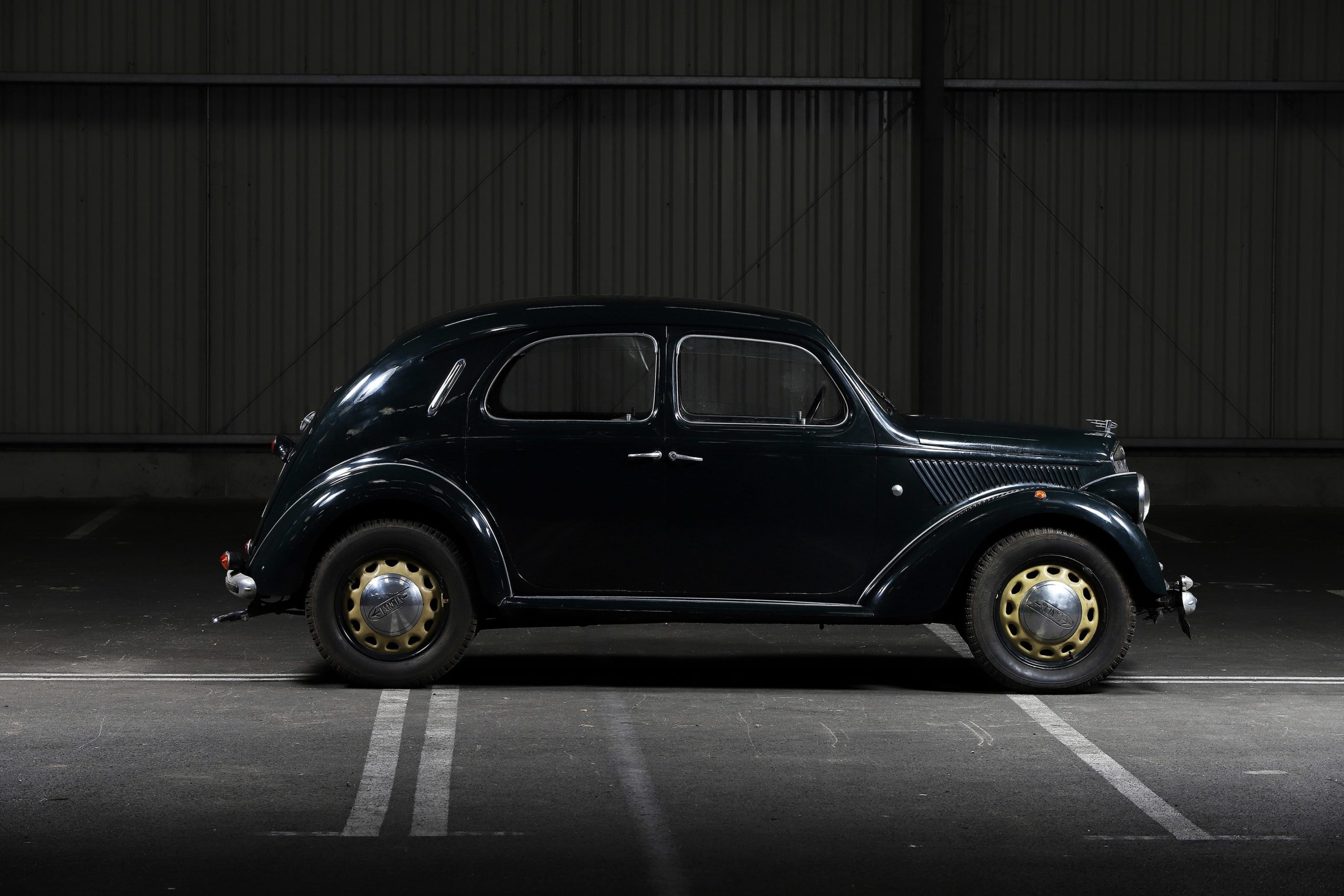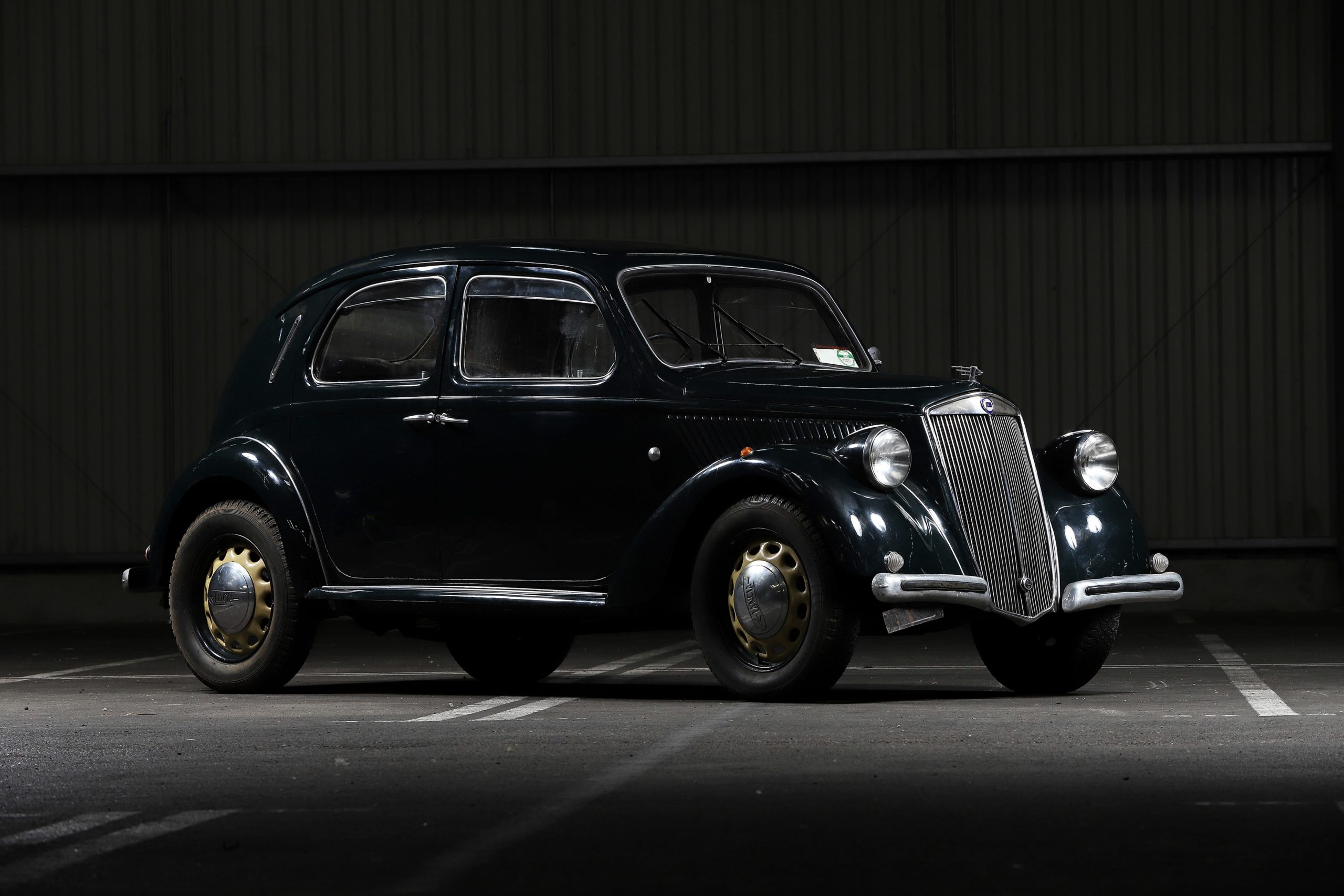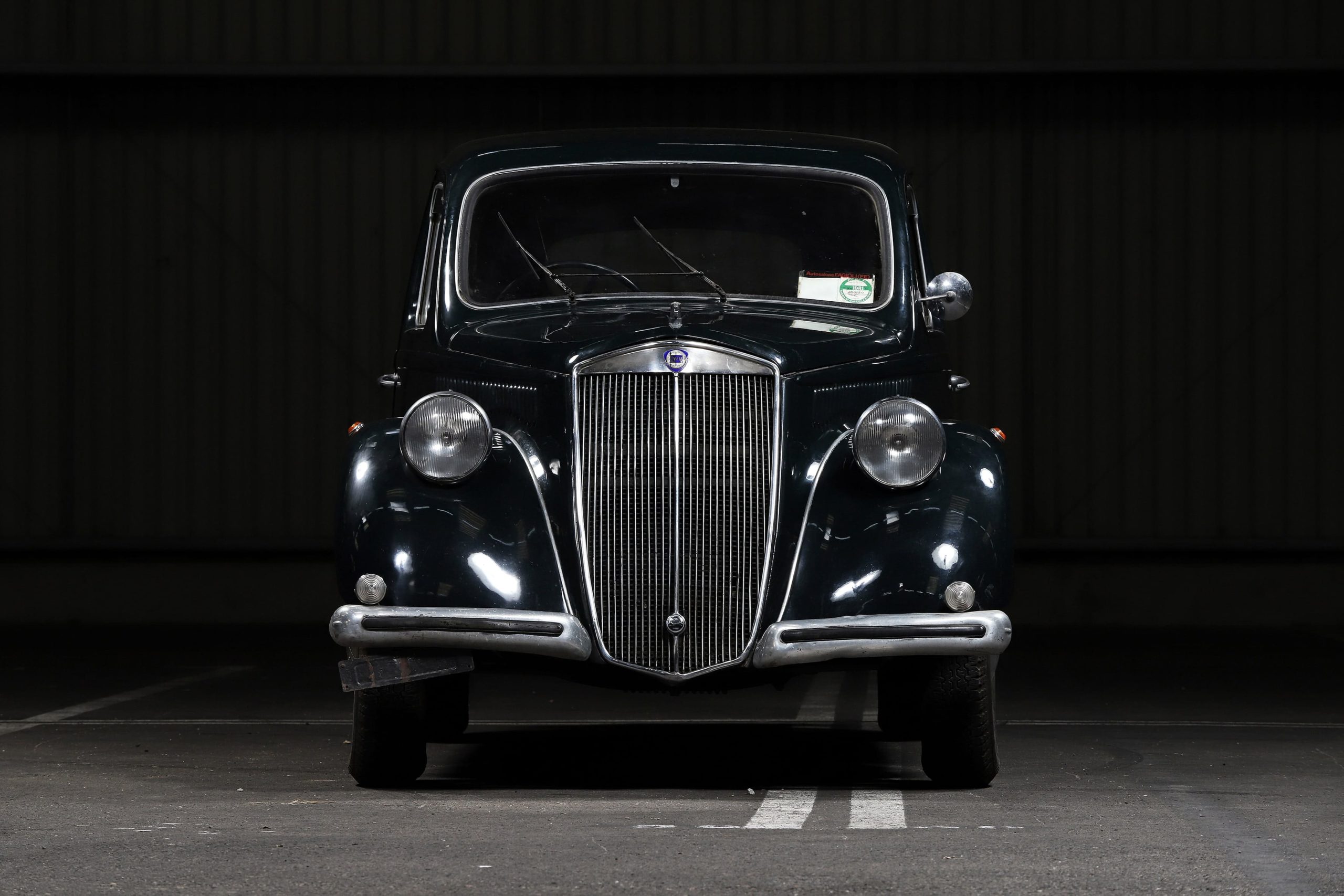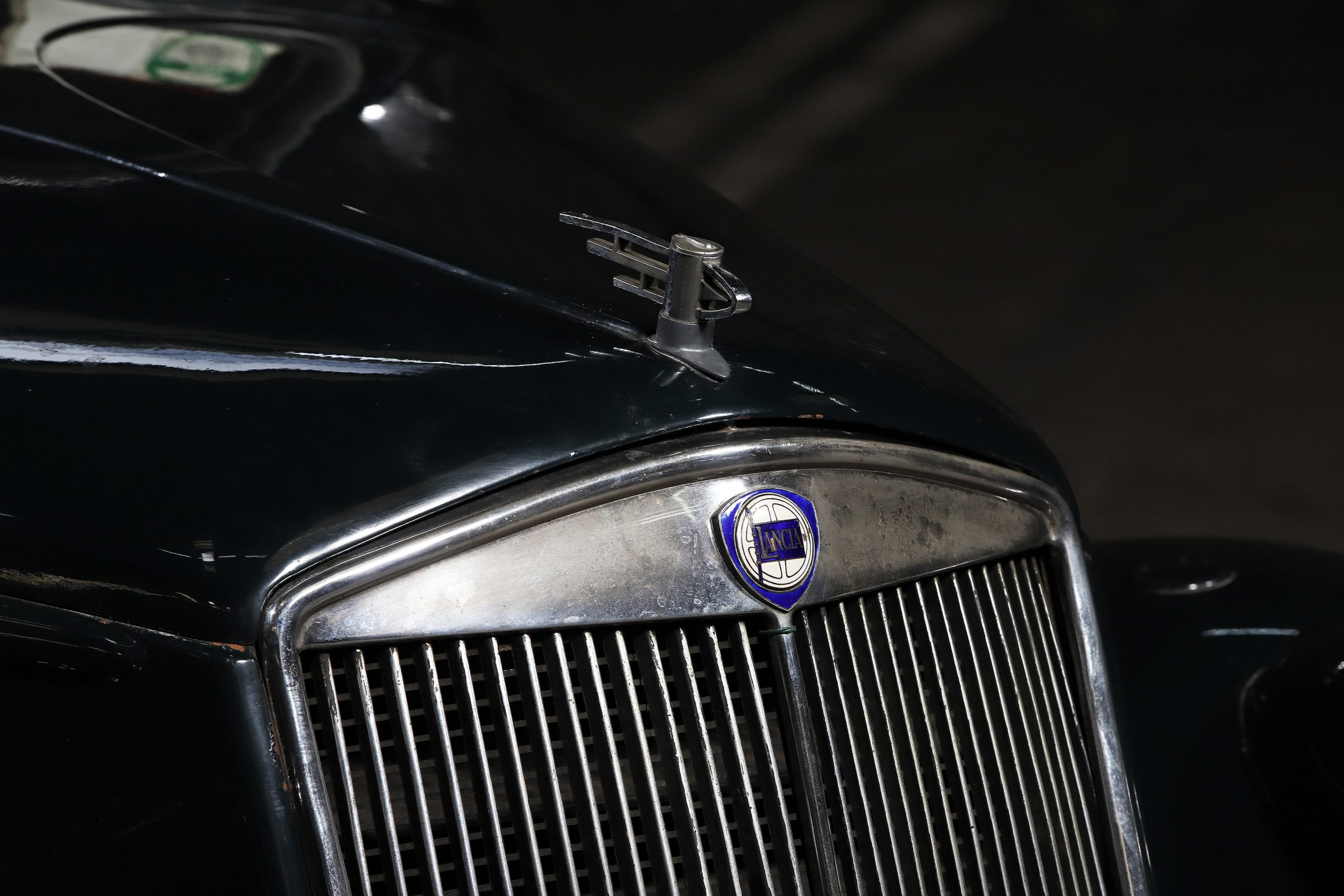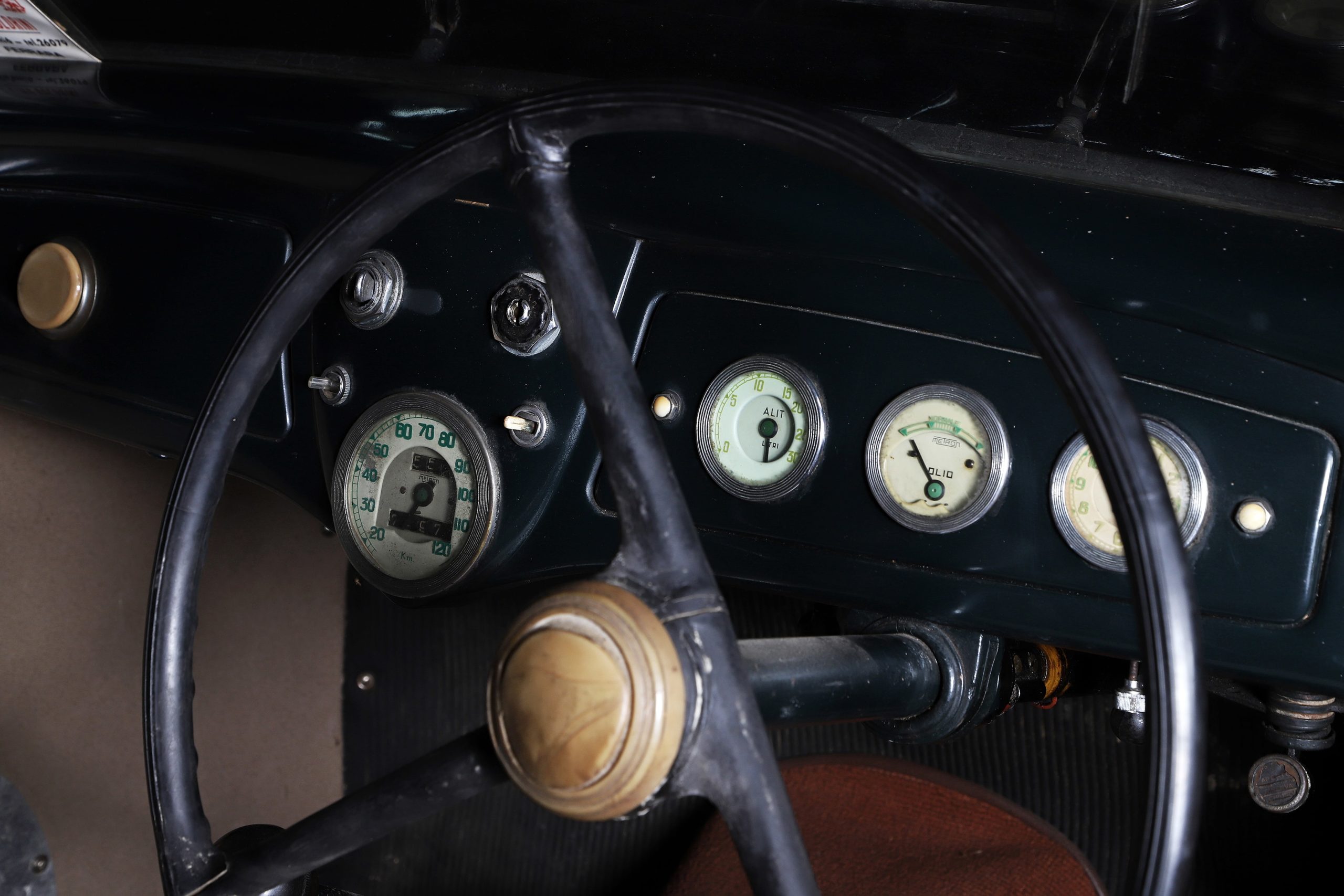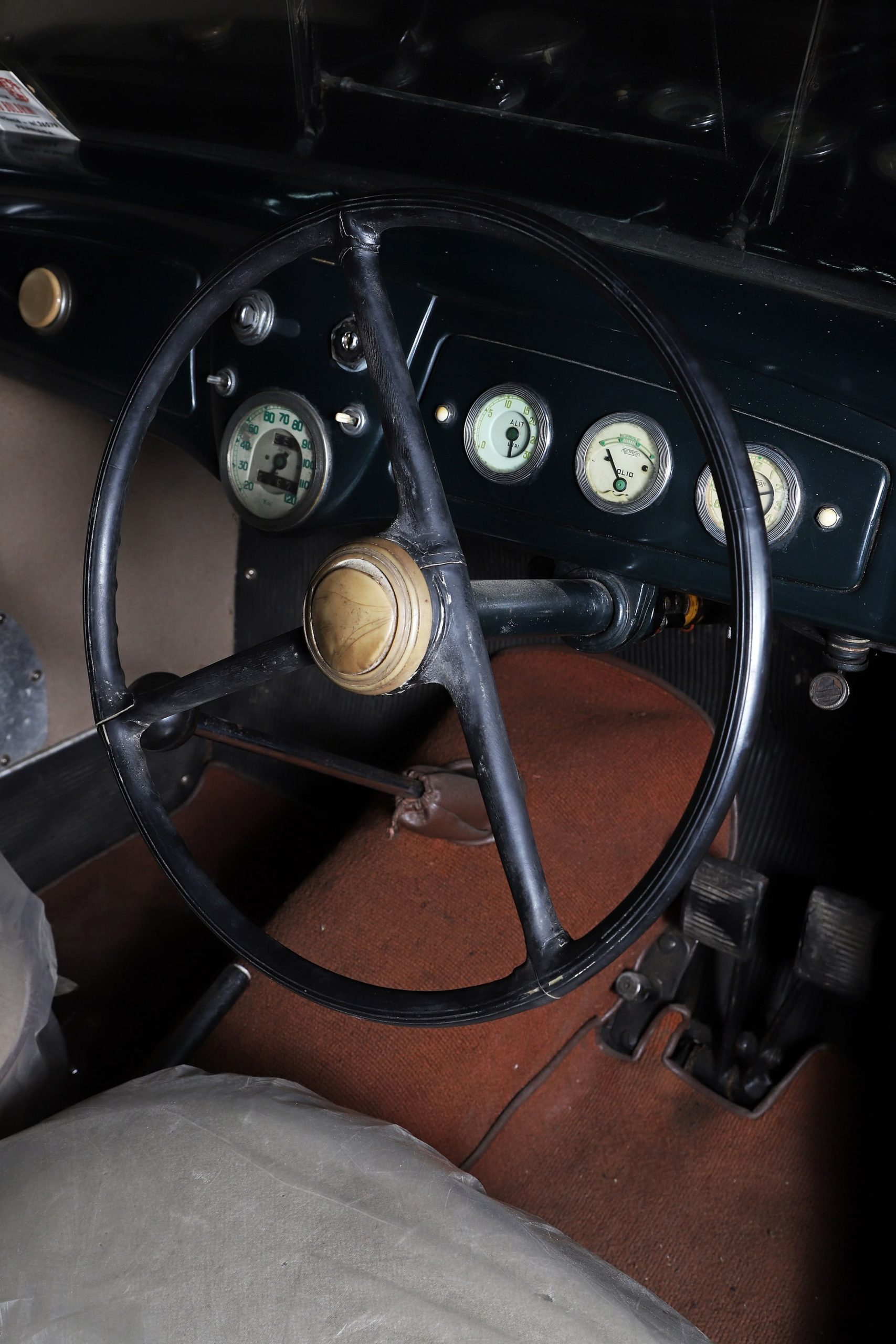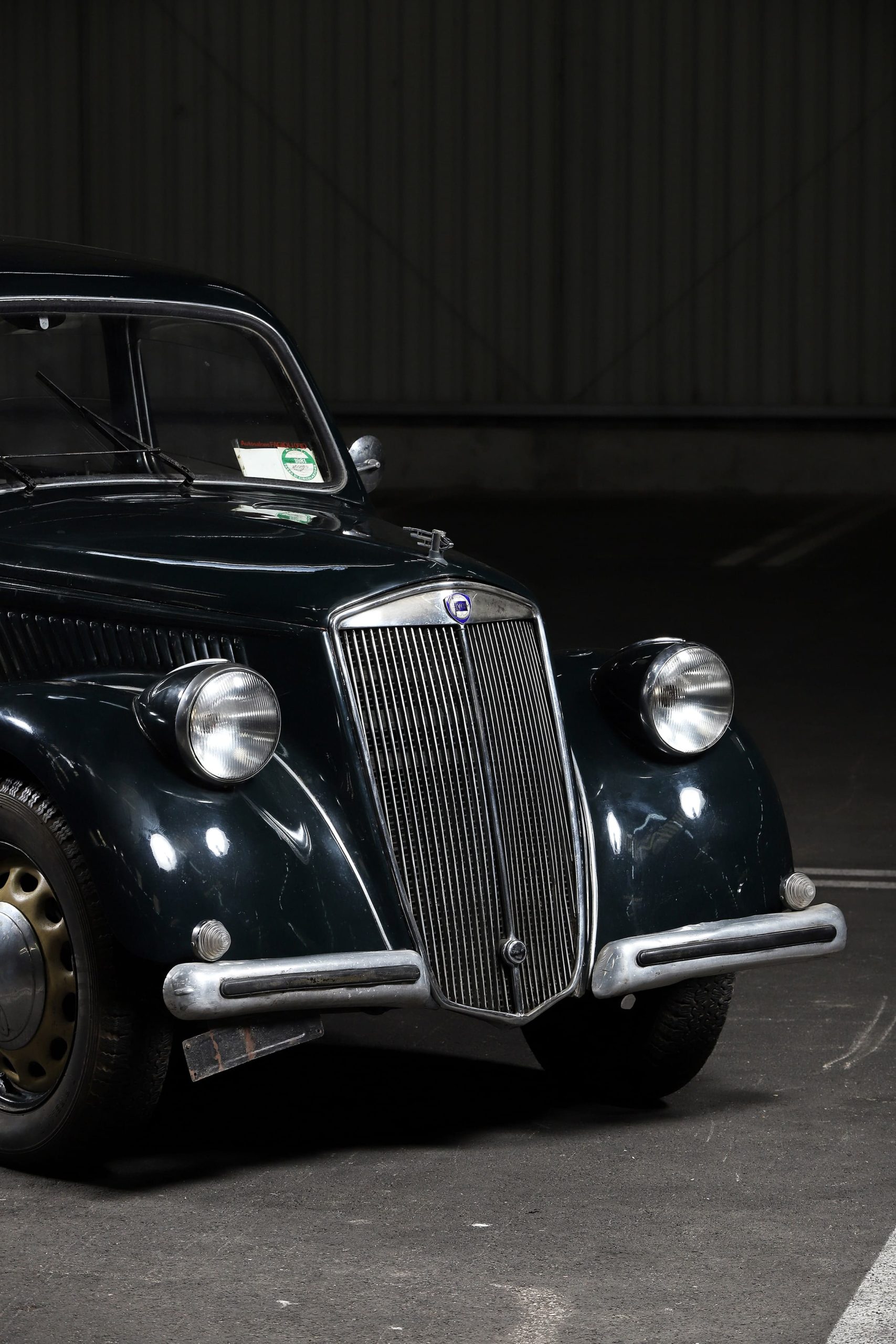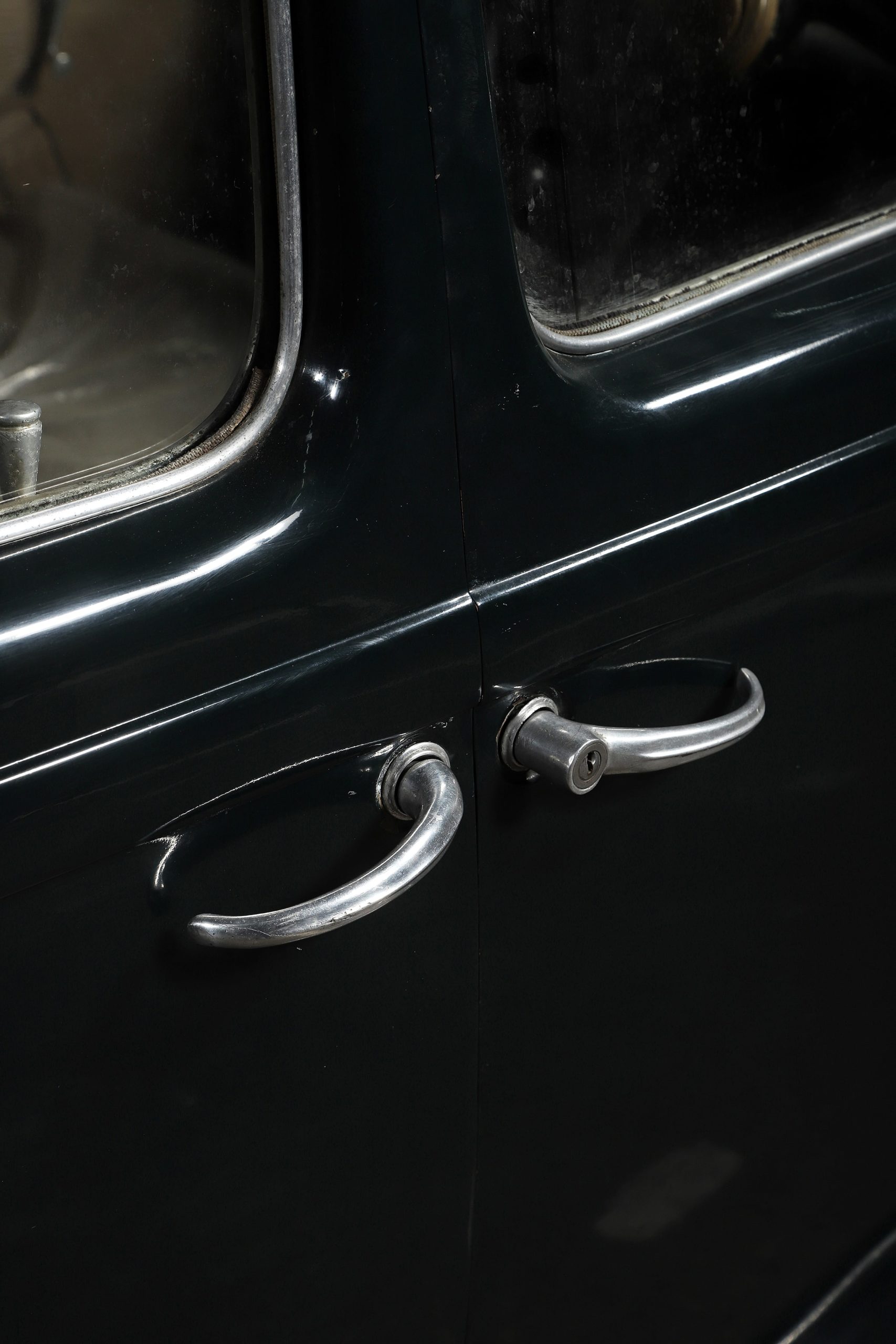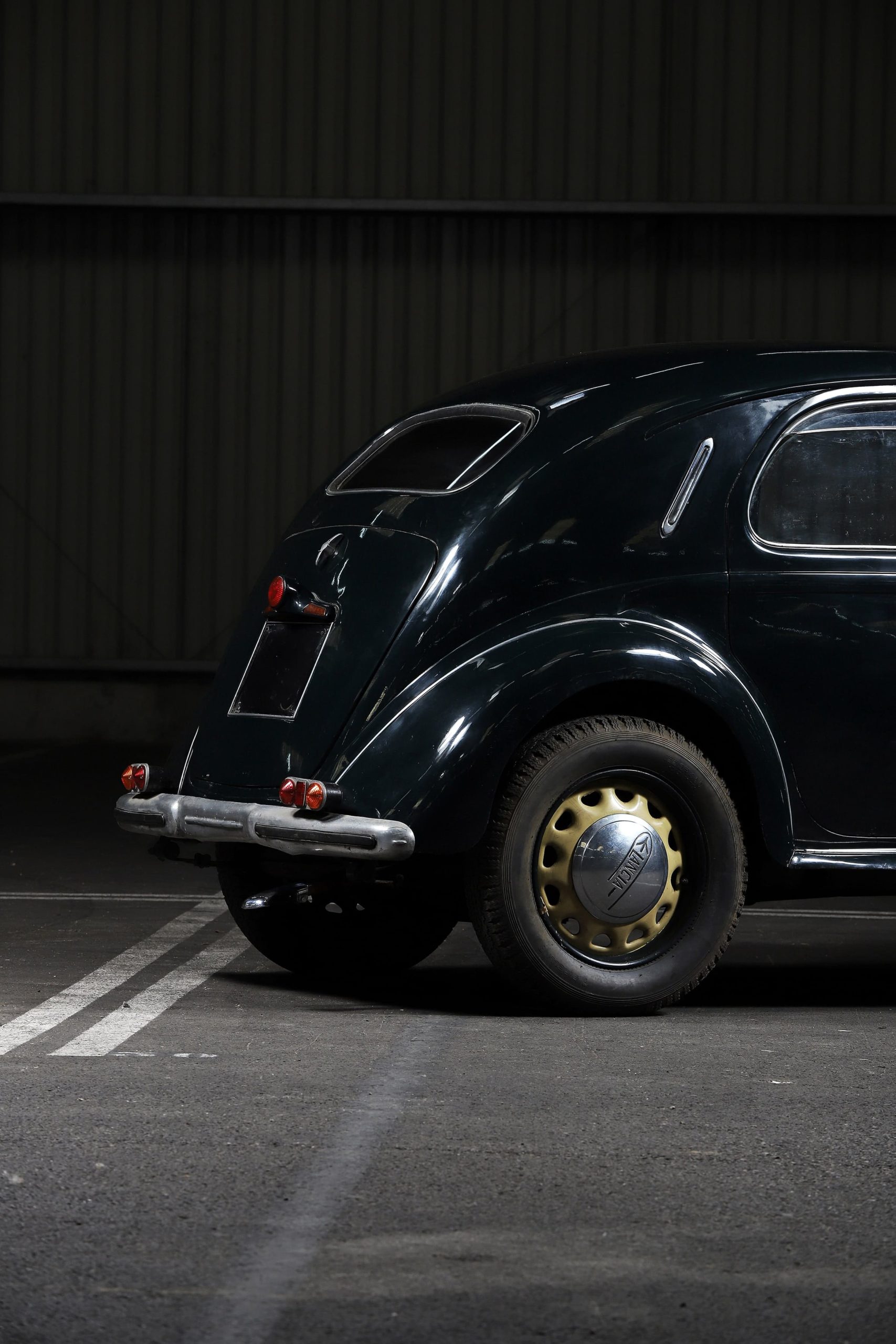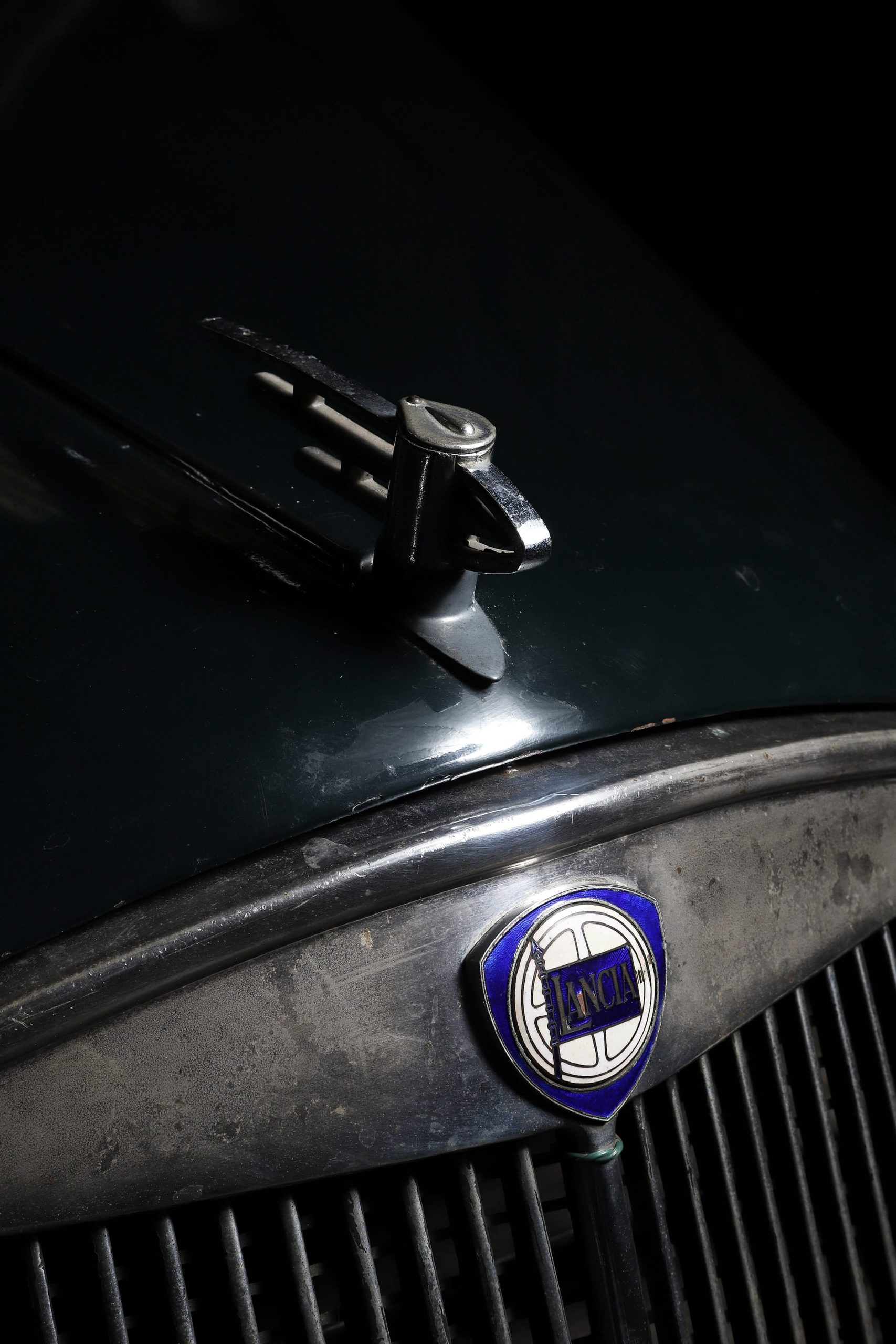Lancia Ardea - 1955
— The elegant and innovative small Lancia —- Model Launched in 1939, the Ardea is the forgotten little sister of the Aprilia, its career only taking off after the war.
- Style A small Lancia stylistically close to the Aprilia with its very elegant antagonist doors without central pillar.
- Technlogy Designed by the prolific and gifted engineer Vittorio Jano, the latest Ardeas feature the world’s first production 5-speed gearbox.
- History An Ardea Series 4 sold new in Italy in a very rare and elegant green livery
- Condition A very well restored car from the early 90’s to be put back on the road and to be looked after inside.
Lancia has never lost its appetite for technically remarkable cars that are ahead of their time paired with true elegance and comfort. The little Ardea, launched just before WW2 and whose real commercial success began in 1945, was no exception to the rule.
The Ardea, an equally refined and elegant little Aprilia
Founded by Vincenzo Lancia and managed since the 30s by his son, Gianni who was a racing enthusiast, the brand has never lost its commitment to offering technologically advanced and refined cars. The Lancias of the 1930s were all in line with what is often considered the first masterpiece of the company: the Lambda.
With its V4, mono-hull structure and aerodynamic egg-shaped body, the Aprilia launched in 1937 was a small revolution.
In 1939, Lancia decided to launch a small car named the Ardea, which was seen as a smaller version of the Aprilia with its round back, short nose and antagonist doors with no central pillar. This stylistic design was to be used throughout the 1950s, first on the Aurelia B22 saloon, then on the successor to the Ardea, the small Appia.
35 cm shorter than the Aprilia, the Ardea had all what larger Lancias were known for. Although its mechanics were a little simpler with a rigid rear axle, it offered technical sophistication with a V4 engine with a hemispherical cylinder head, a displacement of 903 cm3 offering 28.8 hp at 4,600 rpm. The valve train was a simplified version of the Aprilia’s one. It also shared the same aluminium connecting rods and gearbox with the Aprilia.
©Aguttes
A career that only took off after the war
Launched in 1939, the Ardea’s launch was unfortunately hampered by WW2 and it was not until 1945 that it was really offered for sale.
The very talented engineer Vittorio Jano, who had joined Lancia just before the war, created a third series of Ardea, launched at the Turin Motor Show in September 1948, with some interesting features such as the boot accessible from the outside, a 12-volt electrical system, Houdaille shock absorbers and above all a World first on a production car: the five-speed gearbox.
The fourth and final series, the Ardea from the ANNA LISA Art On Wheels collection, started on 16 November 1949 and included major mechanical improvements such as a new aluminium cylinder head, a higher compression ratio, a new carburettor and an increase in power to 30 bhp.
Despite the interruption caused by the war, the commercial career of the Ardea was a real success: 22,000 units were built until the beginning of 1953, when the small Appia took over, again with a real commercial success.
The Lancia Ardea from the ANNA LISA collection
The Ardea from the ANNA LISA Art on Wheels collection is the fourth series of cars, it was sold new in Italy in 1951 and is particularly elegant with its rare dark green colour.
With its beautiful patina, the result of a quality restoration carried out in the early 90’s, it is just waiting to be driven again, which should be possible with a simple engine rebuild. Unfortunately, even though the interior has been redone, there are many holes.
